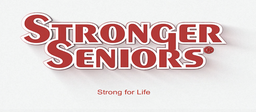Seven Medicare Part D Costs to Prepare For...Switching plans might allow you to reduce your prescription drug costs.
Medicare Part D beneficiaries are eligible to change Medicare Part D plans each year between October 15 and December 7, and for most people it's worth considering a switch. Two-thirds of Part D plan enrollees are facing premium increases if they stay with their current plan in 2017, according to a Kaiser Family Foundation analysis of 2017 Medicare Part D plan offerings. But premium prices are only one aspect of selecting the Medicare Part D prescription drug plan that best meets your medication needs. Many other factors influence your out-of-pocket costs including the plan's formula of covered medications, deductible, co-pays, coinsurance and network of preferred pharmacies. Here are the costs you should consider as you select a Medicare Part D plan for next year.
Premiums. The average Medicare Part D premium will be $42.17 in 2017 if retirees stick with their current plan, according to KFF projections. That's a 62 percent increase from the average of $26.04 per month retirees paid in 2006, the year the Medicare Part D drug benefit was introduced. However, premiums vary widely among plans. Among the 10 plans with the highest enrollment, premiums range from $16.81 to $71.66 per month. Medicare beneficiaries have an average of 22 Medicare Part D plans to choose from, so most retirees have a variety of options to consider.
Deductibles. The standard Medicare Part D deductible will increase by $40 to $400 in 2017. The majority of Part D plans (62 percent) will charge a deductible in 2017. The standard deductible is the most common amount, but some plans have smaller deductibles or no deductible.
Copays and coinsurance. Most Part D plans have five tiers of covered medications with different cost-sharing requirements. There are typically two tiers for generic drugs, with small or no copayments for preferred generic drugs and slightly higher copays for medications on the non-preferred generic tier. The next tier is for preferred brand name drugs, which typically involves a $40 copayment in 2017, but a few plans charge 20 percent of the cost of the medication. The cost often jumps to 40 percent of the price of the medication for drugs on the non-preferred brand name tier. Most Part D plans also have a specialty medication tier for expensive drugs, and plans generally charge either 25 percent or 33 percent of the cost of the medicine. Enrollees usually pay higher out-of-pocket costs when plans pass on a percentage of the price of the drug to patients rather than a set copayment amount, KFF found.
The coverage gap. Medicare Part D has a coverage gap, which is often referred to as the donut hole. Retirees who spend enough money on prescription drugs to enter the coverage gap will need to pay for 40 percent of the cost of brand-name drugs and 51 percent of the price of generic drugs until their expenses are high enough for catastrophic coverage to kick in. Most Part D plans (72 percent) don't provide additional gap coverage beyond what is required, KFF found.
Out-of-network pharmacies. Most Part D plans (85 percent) have preferred pharmacies where retirees can fill their prescriptions at a lower cost, up from 7 percent in 2011. If you choose to use a different pharmacy, the out-of-pocket cost for the same medication is higher. For example, one plan charges a $1 copayment for preferred genetic drugs and $4 for non-preferred generic drugs at a preferred pharmacy, but those cost-sharing requirements climb to $10 and $20, respectively, at a non-preferred pharmacy.
Drugs that aren't in the formulator. Each Medicare Part D plan has a list of covered drugs called the formulator. You can check to see if your current medications, or medicines you expect to need in the coming year, are covered by each plan and at what price. Plans are allowed to change their formulator each year, so you will need to repeat this search annually. Some plans also place restrictions on certain drugs, such as limiting how much of a given medication you can buy at a time, requiring you to try a lower cost drug before the plan will pay for a higher cost alternative or requiring you to get prior authorization before you can fill certain prescriptions. Take a close look at the covered medications and the drug restrictions before purchasing a plan.
Late enrollment penalty. Most people first become eligible for Medicare Part D during the seven-month period that begins three months before the month they turn 65. It's important to sign up during this initial enrollment period, because a late enrollment penalty is permanently added to your Medicare Part D premiums if you go 63 or more days without prescription drug coverage after becoming eligible for Medicare Part D.
Source: Emily Brandon is the author of "Pensionless: The 10-Step Solution for a Stress-Free Retirement."


